Science and Technology: October 2023 UPSC Current Affairs | Science & Technology for UPSC CSE PDF Download
Venus’ Tectonic History
Context
A recent study suggests that Venus, often considered Earth’s sister planet, might have undergone tectonic activity roughly 3.5 to 4.5 billion years ago.
Relevance: GS I: Geography
Venus’ Tectonic History: Unveiling Earth’s “Sister”
Plate Tectonics on Earth
- Plate tectonics is a fundamental theory explaining the division of Earth’s outer shell into plates that float on the mantle, shaping our planet’s features and sustaining life.
Venus: Earth’s Enigmatic Twin
- Venus, a celestial sibling to Earth in size, mass, density, and volume, remains relatively mysterious compared to other terrestrial planets.
Implications of Venus’ Tectonic History
- Venus's tectonic history has crucial implications for its atmosphere and the potential existence of ancient microbial life.
- Similarities to Earth's plate tectonics may have played a significant role in shaping Venus's atmosphere, characterized by high levels of carbon dioxide and nitrogen.
- It is essential to understand Venus's atmospheric composition, which consists of approximately 96.5% carbon dioxide and less than 3.5% nitrogen.
- The study suggests the intriguing possibility that Venus might have supported microbial life billions of years ago, influenced by its tectonic activities.
Plate Tectonics’ Impact on Venus
- Cessation of Plate Tectonics: On Venus, plate tectonics may have ceased due to factors like water loss and an increasingly hot and dense atmosphere, potentially depleting the prerequisites for tectonic movements.
- Dynamic Planetary States: The study suggests that planets can transition in and out of different tectonic states, challenging the idea that tectonics are either entirely present or absent during a planet’s history.
- Reevaluating Tectonic Paradigms: This realization redefines the conventional binary perspective of tectonics as either true or false throughout a planet’s history.
- Future Prospects with DAVINCI: To validate their findings and delve deeper into Venus’s tectonic past, researchers anticipate insights from NASA’s upcoming mission to Venus, DAVINCI. This mission holds the potential to offer crucial clues and enhance our understanding of Venus’s geological evolution.
- Uncovering Reasons for Tectonic Shift: Additionally, researchers aim to elucidate the reasons behind Venus losing its plate tectonics over time, furthering our knowledge of the planet’s geology.
About Venus
- Venus is the second planet from the Sun and is the brightest natural object in Earth’s night sky after the Moon. It can cast shadows and can be seen with the naked eye on rare occasions, even during daylight.
- Venus has a unique rotation pattern, where the Sun rises in the west and sets in the east. This is because it rotates in the opposite direction (East to West/Clockwise) to all but Uranus.
- Venus has the densest atmosphere of the four terrestrial planets, consisting of more than 96% carbon dioxide. This causes a strong greenhouse effect, making Venus the hottest planet in the Solar System despite being farther from the Sun than Mercury.
- The atmospheric pressure at the planet’s surface is about 92 times that of Earth’s sea level pressure.
- Venus is covered by an opaque layer of highly reflective clouds made of sulfuric acid, which prevents its surface from being seen in visible light.
- The planet lacks a planetary magnetic field, which caused the water to photo dissociate and the free hydrogen to be swept into interplanetary space by the solar wind.
- Venus has been a significant fixture in human culture for as long as records have existed.
Self-Reliance in Cybersecurity
Why in News?
Recently, the Prime Minister of India has emphasised the importance of Self-Reliance in Cybersecurity during the 7th edition of the India Mobile Congress.
- PM’s emphasis on self-reliance in the entire cybersecurity value chain, including hardware, software, and connectivity, reflects the growing concern about the security of India's digital infrastructure.
What is Self Reliance in Cybersecurity?
- About:
- Self-reliance in cybersecurity refers to a nation's ability to develop and maintain its own capabilities, technologies, and expertise to protect its digital infrastructure, data, and information systems without relying heavily on foreign technology or external assistance.
- It emphasizes the development and deployment of indigenous cybersecurity solutions and practices, reducing dependence on external sources for cybersecurity tools and expertise.
- Need for Self Reliance in Cyber Security:
- National Security: Many of a nation's critical infrastructure systems, such as energy grids, transportation networks, and communication systems, rely on digital technology.
- Modern military operations are heavily dependent on digital technology.
- Any compromise in cybersecurity can result in significant disruptions, posing a direct threat to national security.
- Geopolitical Considerations: Over-reliance on foreign technology, particularly from countries with which India may have strained relations such as China, can pose a security risk.
- Since India imports the majority of electronic raw materials from China, which is a cause for concern for India.
- Achieving self-reliance reduces the vulnerabilities associated with depending on technology from external sources.
- Technological Independence: Self-reliance necessitates the creation of secure and reliable hardware, software, and networking components.
- This encourages innovation and research in the field of cybersecurity.
- Relying on foreign technology may expose the supply chain to vulnerabilities. Self-reliance allows India to have greater control over the entire technology supply chain, reducing potential risks.
What are the Challenges Related to Cybersecurity in India?
- Profit-Friendly Infrastructure Mindset:
- Post liberalisation, the Information Technology (IT), electricity and telecom sector has witnessed large investments by the private sector. However, their inadequate focus on cyber attack preparedness and recovery in regulatory frameworks is a cause of concern.
- All operators are focused on profits, and do not want to invest in infrastructure that will not generate profits.
- Absence of Separate Procedural Code:
- There is no separate procedural code for the investigation of cyber or computer-related offences.
- Trans-National Nature of Cyber Attacks:
- Most cyber crimes are trans-national in nature. The collection of evidence from foreign territories is not only a difficult but also a tardy process.
- Expanding Digital Ecosystem:
- In the last couple of years, India has traversed on the path of digitalising its various economic factors and has carved a niche for itself successfully.
- Latest technologies like 5G and the Internet of Things (IoT) will increase the coverage of the internet-connected ecosystem.
- With the advent of digitalisation, paramount consumer and citizen data will be stored in digital format and transactions are likely to be carried out online which makes India a breeding ground for potential hackers and cyber-criminals.
- Limited Expertise and Authority:
- Offenses related to crypto-currency remain under-reported as the capacity to solve such crimes remains limited.
- Although most State cyber labs are capable of analysing hard disks and mobile phones, they are yet to be recognized as 'Examiners of Electronic Evidence' (by the Central Government). Until then, they cannot provide expert opinions on electronic data.
How is India Making Strides in Technology Development?
- Domestic Supply Chain Partners:
- India is actively working to diversify its supply chain partners, especially in the technology sector. This diversification is essential, given the dominance of Chinese players in the manufacturing ecosystem.
- The government seeks to establish more trusted and secure supply chains to prevent malware and cyber threats.
- 5G and Mobile Broadband:
- The government awarded 100 5G Use Case labs to educational institutions across the country, indicating its commitment to advancing 5G infrastructure.
- India has transitioned from the 5G rollout stage to the 5G reach-out stage. The median mobile broadband speed has increased threefold in just one year.
- India's emphasis on becoming a leader in 6G technology underscores the country's ambition to stay at the forefront of technological advancements.
- Broadband Speed:
- India's position in terms of broadband speed has significantly improved, moving from 118th to 43rd globally which indicates the growth of high-speed internet access in the country.
- Electronics and Smartphone Manufacturing:
- There has been significant progress in electronics and smartphone manufacturing.
- Semiconductor manufacturing is a critical component of the technology supply chain and plays a pivotal role in hardware production.
- Startup Ecosystem:
- India's startup ecosystem has been flourishing, with a rapid increase in the number of startups.
- The transformation from having 100 startups before 2014 to approximately 100,000 startups today.
Way Forward
- Encourage research and development in the field of cybersecurity. Establish partnerships between government agencies, academic institutions, and private sector companies to promote innovation and the development of indigenous cybersecurity technologies.
- Provide support, funding, and incentives to cybersecurity startups and small and medium-sized enterprises (SMEs) working on innovative cybersecurity solutions. These startups can play a significant role in creating homegrown technologies.
Internal Structure of Mars
Context
- The strongest-ever quake to violently shake Mars arose not because of a crashing asteroid but rather the tectonic forces within the planet itself, scientists reported
- The new findings show the Red Planet is more seismically active than previously thought.
Details
Background
- InSight Mission: The InSight lander, deployed on the Martian surface, detected a magnitude 4.7 Marsquake in May 2022, surpassing the previous record of magnitude 4.2 recorded in 2021.
- Seismic Activity: The InSight mission has identified over 1,300 marsquakes, with some traced to asteroid impacts. However, the recent significant quake raised questions due to the absence of expected indicators associated with asteroid impacts.
Recent Findings
- Tectonic Origin: After an extensive investigation, scientists concluded that the May 2022 Marsquake was tectonic in origin, suggesting that Mars is more seismically active than previously believed.
- Causes of Marsquake: The quake is thought to have resulted from the release of billion-year-old stresses within Mars' crust, attributable to the planet's cooling and shrinking processes over time.
- Implications: These findings challenge the conventional view that Mars, being smaller and colder than Earth, lacks tectonic activity. Understanding the distribution of stress within the planet's crust is essential for potential future human missions to Mars.
Scientific Significance
- Insights into Martian Geology: The discovery provides crucial insights into the geological processes and internal dynamics of Mars, enhancing our understanding of its geological history and evolution.
- Potential Human Missions: Understanding the distribution of stresses within the Martian crust is crucial for identifying safe areas for potential human habitation and exploration.
About
Overview:
- Marsquakes refer to the seismic activity or quakes occurring on the planet Mars.
- Similar to earthquakes on Earth, these seismic events result from the release of energy accumulated within the Martian crust, causing the ground to shake and vibrate.
Characteristics:
- Seismic Waves: Marsquakes produce seismic waves that can be detected and analyzed by seismometers, providing crucial information about the interior structure and composition of Mars.
- Magnitude: Marsquakes can range in magnitude, with some being relatively minor tremors and others producing more significant shaking.
Detection and Study:
- InSight Mission: The InSight (Interior Exploration using Seismic Investigations, Geodesy, and Heat Transport) mission, launched by NASA in 2018, includes a seismometer designed to detect and record Marsquakes. This mission has provided unprecedented insights into the Martian interior.
- Seismic Monitoring: Seismometers measure the motion of the ground caused by Marsquakes and help scientists understand the composition, layering, and tectonic activity of Mars' crust and mantle.
Scientific Significance:
- Planetary Evolution: Analyzing Marsquakes helps scientists understand the geological processes that shaped the planet's surface and interior over time, providing clues about its early geological history and evolution.
- Internal Structure: By studying seismic waves, scientists can infer the internal structure of Mars, including the thickness and composition of the crust, the properties of the mantle, and the potential presence of a liquid or solid core.
- Tectonic Activity: Marsquakes can provide insights into the tectonic activity and potential volcanic processes that might still be active beneath the Martian surface.
Comparison with Earthquakes:
- Differences in Intensity: Marsquakes are generally less intense than earthquakes, as Mars is a much less geologically active planet compared to Earth.
- Geological Context: Understanding the differences between Marsquakes and earthquakes provides valuable comparative data for studying the geological evolution of both Earth and Mars.
Conclusion
The recent findings underscore the need for continued research into Martian geology and seismic activity, paving the way for a deeper understanding of the Red Planet's potential for sustaining human life and future exploration endeavors. Studying Marsquakes is instrumental in deepening our understanding of the Red Planet's geology, history, and potential habitability, contributing to future human exploration and possible colonization efforts on Mars.
Thallium Poisoning
Context
Cases of Thallium poisoning have been rising in India, particularly in the Maharashtra
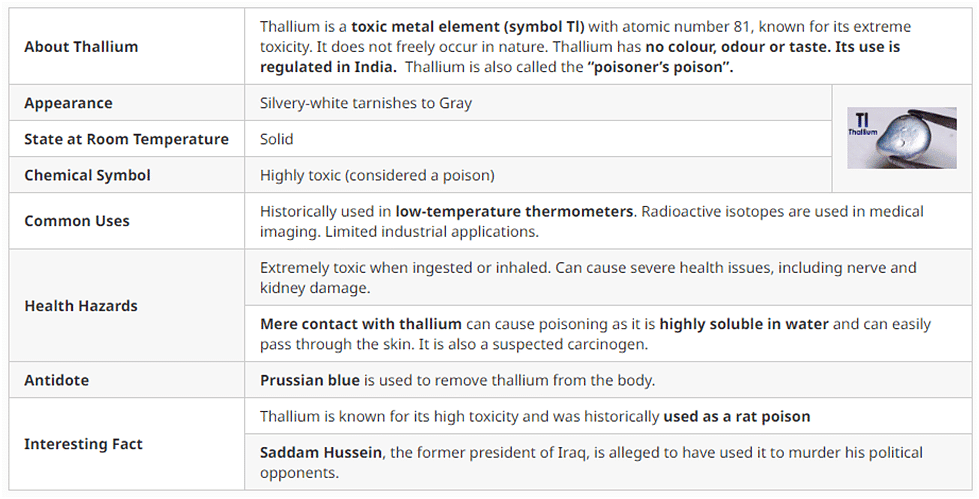
Emergence of Multimodal AIs
Context
- Multimodal artificial intelligence (AI) is gaining prominence as the next frontier in AI development.
- Multimodal AI systems allow users to interact with AI through various means, such as images, sounds, videos, and text. This approach is important because it aligns more closely with how humans understand and interpret information from diverse sources.
Key points regarding multimodal AI
- Leading AI companies like OpenAI and Google are actively pursuing multimodal AI systems. OpenAI, known for GPT-3 and GPT-4, has enabled its models to understand and analyze images, and its mobile apps are being equipped with speech synthesis for more interactive conversations with chatbots.
Working of Multimodal Artificial Intelligence
- It involves combining different modalities such as text and images or text and audio during training. This enables AI systems to understand and generate content across various modalities. For example, OpenAI’s DALL.E model connects text and images to generate visual content based on text prompts, while GPT’s voice processing capabilities are rooted in Whisper, its speech-to-text translation model.
Applications of Multimodal AI
- Multimodal AI has practical applications, such as automatic image caption generation, detecting hate speech in memes, predicting dialogue in videos, and even potential uses in fields like medicine, autonomous driving, and robotics.
- In medicine, multimodal AI is useful for processing complex datasets from sources like CT scans. In speech translation, AI models can perform text-to-speech, speech-to-text, speech-to-speech, and text-to-text translations for various languages.
Uterus Transplantation
Central Idea
- In the UK, doctors at the Churchill Hospital Oxford conducted the nation’s first uterus transplant.
- The procedure involved removing a uterus from a 40-year-old woman and transplanting it into her 34-year-old sister, who faced reproductive challenges due to a rare medical condition.
Why discuss this?
- While the transplanted womb is functional, its success can only be confirmed by a live birth in the future.
Understanding Uterus Transplants
- Not Life-Saving: Unlike heart or liver transplants, uterus transplants are not life-saving procedures. Instead, they are akin to limb or skin transplants, significantly enhancing individuals’ quality of life.
- Addressing Uterine Infertility: Uterus transplants offer hope to women facing uterine factor infertility, enabling them to fulfill their reproductive aspirations.
Pioneering Success in Sweden
- Historical Context: In 2014, Sweden achieved a milestone by witnessing the first live birth following a uterus transplant. This success paved the way for addressing uterine factor infertility.
- Affordability Challenge: Efforts are ongoing to make uterus transplants more accessible, especially in countries like the UK, where the National Health Service estimates the procedure’s cost at GBP 25,000 (Rs 25.26 lakh).
Uterus Transplants in India
- Indian Achievement: India joined the ranks of countries with successful uterus transplants, alongside Turkey, Sweden, and the United States. The country celebrated its first uterine transplant baby’s birth on October 18, 2018, approximately 17 months after the recipient underwent the procedure.
- Affordable Option: The cost of uterine transplant surgery in India currently ranges from Rs 15-17 lakh, making it a more cost-effective choice for many.
Step-by-Step Procedure
- Recipient Evaluation: Before transplantation, recipients undergo thorough evaluations to assess their physical and mental health.
- Donor Assessment: Whether the donor is living or deceased, their uterus undergoes viability checks before qualifying for donation. Live donors also undergo comprehensive gynecological examinations, including imaging scans and cancer screenings.
- In Vitro Fertilization (IVF): Uterus transplants do not connect the uterus to the fallopian tubes, necessitating IVF to create embryos. These embryos are then cryopreserved until the transplanted uterus is ready for implantation.
- Harvesting and Transplantation: The donor’s uterus is carefully removed, with the procedure becoming less invasive due to advancements in robot-assisted laparoscopy. The uterine vasculature and other critical connections are meticulously re-established during transplantation.
Pregnancy after Transplant
- The success of the transplant is assessed through three stages: the first three months focus on graft viability, followed by six months to one year for monitoring uterine function.
- Only after this period can the recipient attempt conception.
Issues with such transplants
- Challenges and Risks: Pregnancy after a uterine transplant entails a higher risk of rejection, spontaneous abortion, intrauterine complications, low birth weight, and premature birth. Close monitoring and follow-ups are essential.
- Immunosuppressant Use: Recipients must take immune-suppressing drugs to prevent rejection of the transplanted uterus. These drugs are selected to ensure they do not harm foetal development but can cause side effects such as kidney toxicity, bone marrow issues, and an increased risk of diabetes and cancer.
- Long-Term Follow-Ups: Post-uterus removal, recipients are advised to undergo regular follow-ups for at least a decade to monitor potential long-term effects of immunosuppressant drugs.
Exploring Artificial Uteri
- Future Possibilities: Successful uterus transplants have opened doors to exploring artificial uteri. These bioengineered organs, grown from stem cells on 3D scaffolds, could eliminate the need for live donors and ethical concerns. However, research is still in its early stages, and it may take about a decade before artificial uteri becomes efficient and safe for human use.
- Inclusivity Considerations: Artificial uteri could benefit not only women but also members of the LGBTQ+ community. However, certain complications, such as hormone-related considerations for trans-women recipients, remain to be addressed.
Conclusion
- Uterus transplants represent a remarkable medical advancement offering hope and possibilities for individuals facing uterine factor infertility.
- While challenges persist, ongoing research and technological progress continue to expand the horizons of reproductive medicine.
Nobel Prize in Chemistry 2023
Context
The 2023 Nobel Prize in Chemistry was awarded for the discovery and synthesis of quantum dots, tiny particles with unique optical properties due to their small size.
What are Quantum Dots?
- Quantum dots are tiny particles, just a few nanometers in size, with unique optical properties due to their small size. While their atomic structure is the same as bulk materials, quantum dots’ properties can be altered by adjusting their size.
- At the nanoscale, these particles exhibit size-dependent characteristics influenced by quantum forces, which differ from macroscopic physics governed by gravity.

Physicists in the 1970s discovered that adding elements like gold, silver, cadmium, sulphur, or selenium could modify the optical properties of glass, but the synthesis of quantum dots had not yet been achieved.
Contributions of the scientists
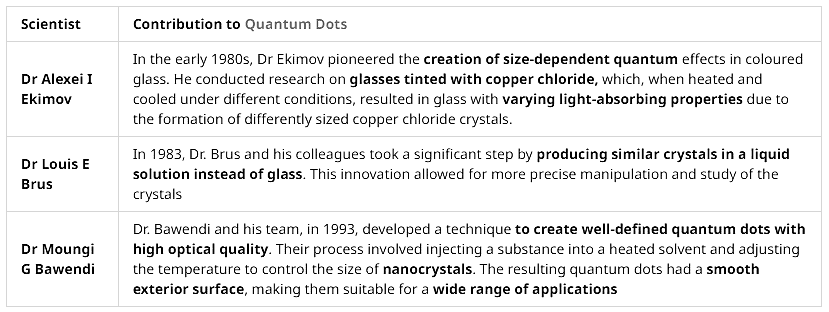
Who are the three scientists?
- Alexei Ekimov: Born in 1945 in the former USSR, he obtained his PhD in 1974 from Ioffe Physical-Technical Institute, Saint Petersburg, Russia. He served as the Chief Scientist at Nanocrystals Technology Inc., New York, USA.
- Louis Brus: Born in 1943 in Cleveland, USA, he earned his PhD in 1969 from Columbia University, New York, where he is a professor.
- Moungi Bawendi: Born in 1961 in Paris, he grew up in France, Tunisia, and the US. He currently holds a professorship at the Massachusetts Institute of Technology (MIT), USA.
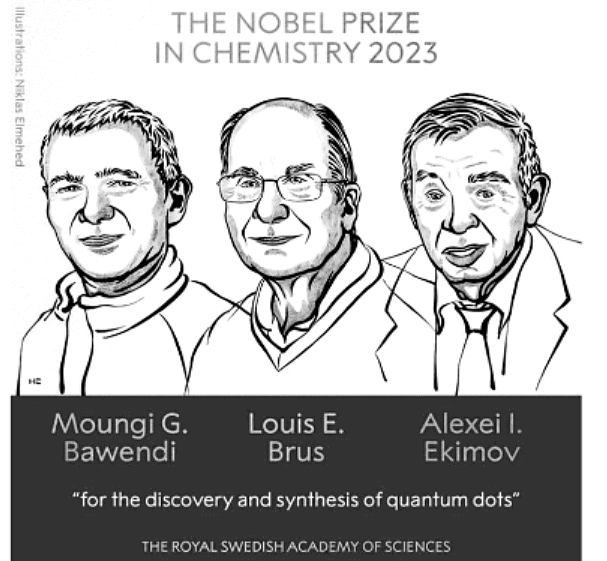
Applications of Quantum dots: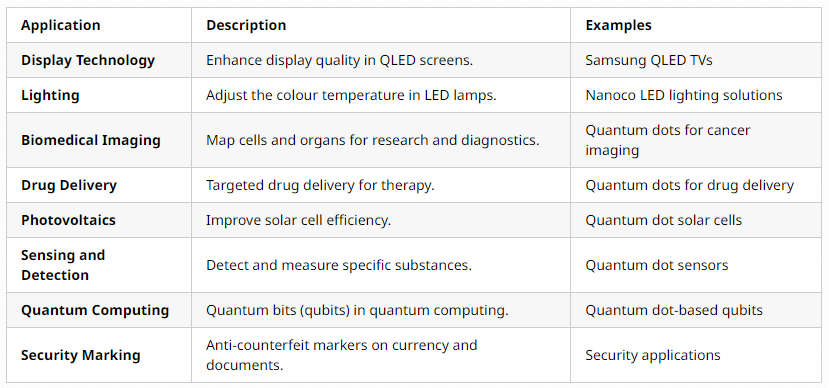
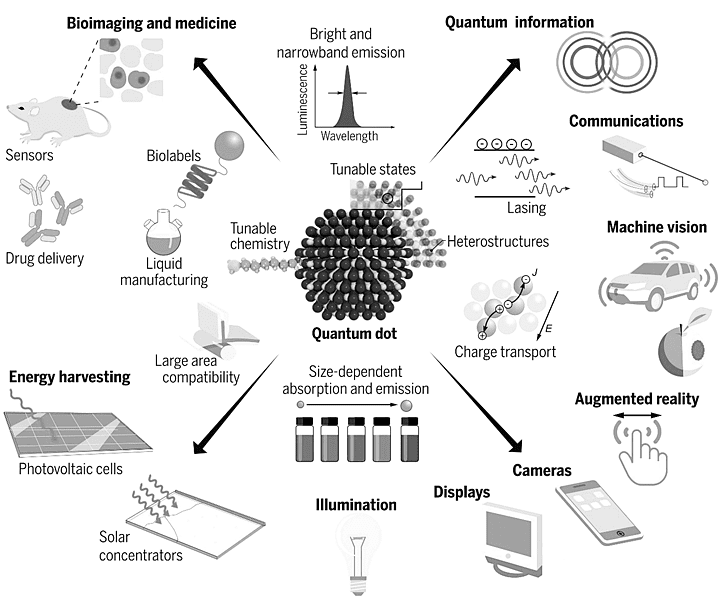
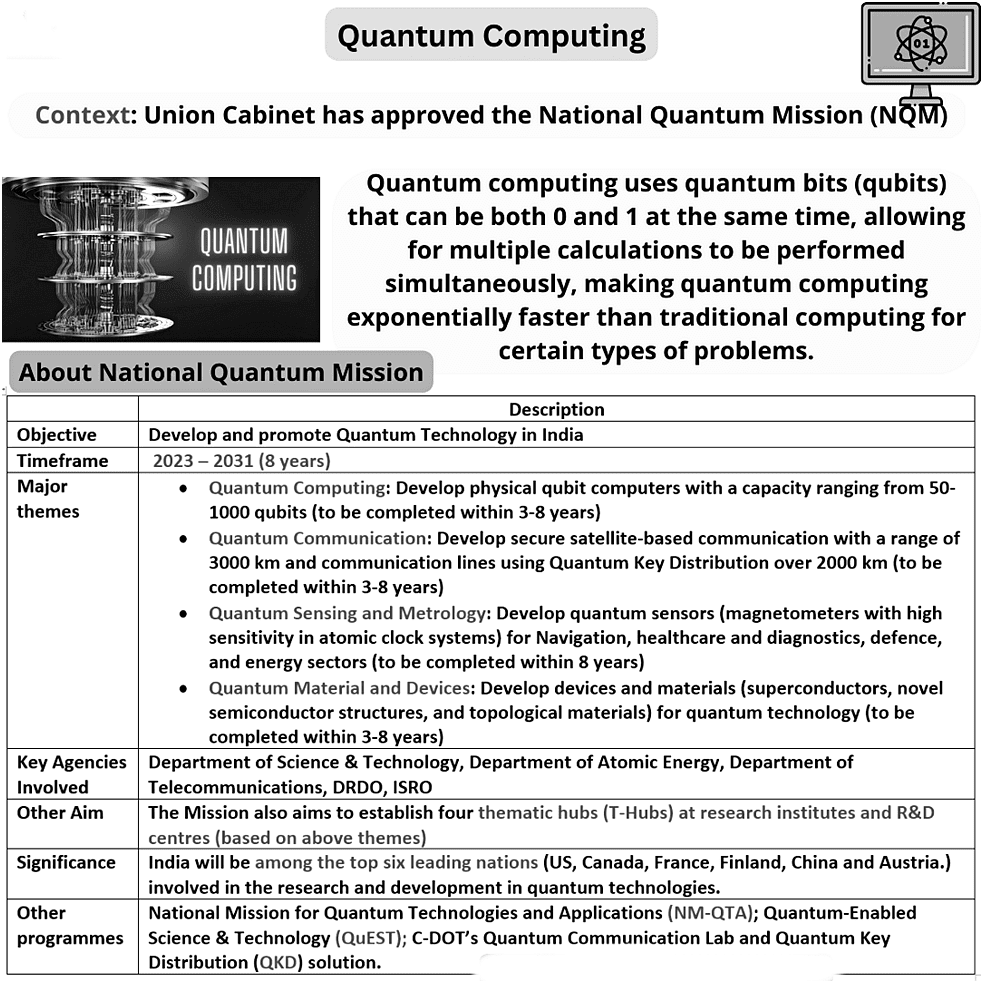
Nobel Prize in Physics 2023
Why in News?
The 2023 Nobel Prize for Physics has been awarded to three distinguished scientists: Pierre Agostini, Ferenc Krausz, and Anne L’Huillier.
- Their groundbreaking work in the field of experimental physics has led to the development of attosecond pulses, enabling scientists to directly observe and study the rapid dynamics of electrons within matter.
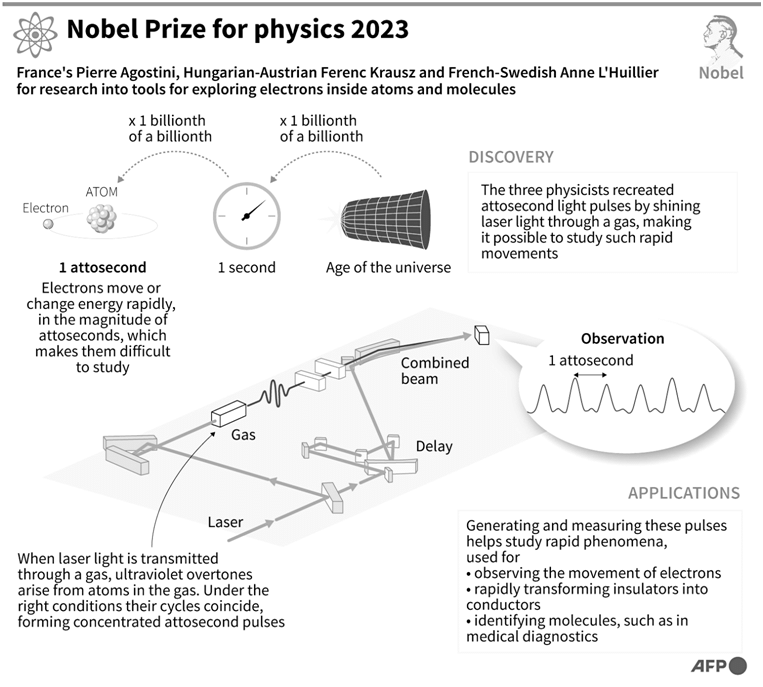
What is Electron Dynamics?
- Electron dynamics refers to the study and understanding of the behavior and motion of electrons within atoms, molecules, and solid materials.
- It encompasses various aspects of electron behavior, including their movement, interactions with electromagnetic fields, and responses to external forces.
- Electrons are fundamental particles with a negative charge and they orbit the dense nucleus. For a long time, scientists had to rely on indirect methods to understand electron behavior, akin to taking a photograph of a fast-moving race car with a long exposure time resulting in a blurry image.
- The rapid motion of electrons rendered them nearly invisible to conventional measurement techniques.
- Atoms in molecules exhibit movements on the order of femtoseconds, which are incredibly short time intervals, constituting a millionth of a billionth of a second.
- Electrons, being lighter and interacting even faster, operate within the attosecond realm, a billionth of a billionth of a second (1×10−18 of second).
How did Scientists Achieve Attosecond Pulse Generation?
- Background:
- In the 1980s, physicists managed to create light pulses lasting just a few femtoseconds.
- At that time, it was believed that this was the shortest achievable duration for light pulses.
- However, to 'see' electrons in action, an even shorter pulse was needed.
- Advancements in Attosecond Pulse Generation:
- In 1987, Anne L’Huillier and her team at a French laboratory achieved a significant breakthrough.
- They passed an infrared laser beam through a noble gas, leading to the generation of overtones—waves of light with wavelengths that were integer fractions of the original beam.
- The overtones generated in the gas were in the form of ultraviolet light. Scientists observed that when multiple overtones interacted, they could either intensify each other through constructive interference or cancel each other out through destructive interference.
- By refining their setup, physicists managed to create intense attosecond pulses of light.
- In 2001, Pierre Agostini and his research group in France successfully produced a series of 250-attosecond light pulses.
- By combining this pulse train with the original beam, they conducted rapid experiments that offered unprecedented insights into electron dynamics.
- Simultaneously, Ferenc Krausz and his team in Austria developed a technique to isolate individual 650-attosecond pulses from a pulse train.
- This breakthrough allowed researchers to measure the energy of electrons released by krypton atoms with remarkable precision.
What are the Applications of Attosecond Physics?
- Studying Short-Lived Processes: Attosecond pulses enable scientists to capture 'images' of ultrafast atomic and molecular processes.
- This has profound implications for fields such as materials science, electronics, and catalysis, where understanding rapid changes is crucial.
- Medical Diagnostics: Attosecond pulses can be employed in medical diagnostics to detect specific molecules based on their fleeting signatures. This promises improved medical imaging and diagnostic techniques.
- Advancing Electronics: Attosecond physics may lead to the development of faster electronic devices, pushing the boundaries of computing and telecommunications technology.
- Enhanced Imaging and Spectroscopy: The ability to manipulate attosecond pulses opens up possibilities for higher-resolution imaging and spectroscopy, with applications in fields ranging from biology to astronomy.
|
90 videos|491 docs|209 tests
|
FAQs on Science and Technology: October 2023 UPSC Current Affairs - Science & Technology for UPSC CSE
| 1. What is the tectonic history of Venus? |  |
| 2. How can we achieve self-reliance in cybersecurity? |  |
| 3. What is the internal structure of Mars? |  |
| 4. What are the symptoms and treatments for thallium poisoning? |  |
| 5. How are multimodal AIs emerging in the field of technology? |  |
















